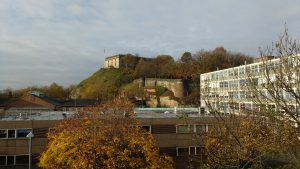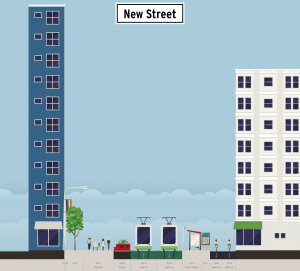March 8, 2019, by Ross Wilson
Digital Tools and Interdisciplinary Skills
Over the last few months, Liberal Arts students have been working on a range of assessment exercises that develop their interdisciplinary skills. This is more than just knowing about English, History, Politics or Philosophy, for example. It is about joining up all those approaches to think across subject areas to create new solutions. We do this through digital assessments.
Digital assessments have become quite common in universities over the last few years. You can take exams online, complete quizzes and collaborate on projects. These allow you to study traditional subjects in new ways that enable accessibility and engagement. However, one big advantage of using digital assessments for interdisciplinary work is that it offers entirely new types of media where we can demonstrate what being interdisciplinary really means.
For example, in our module, Introduction to Liberal Arts, we use blogs, photographs, videos and collaborative online projects to examine the nature of time. We look at how people experience time in different ways and how we need to re-assess our understanding of time as stable and solid if we are going to be interdisciplinary.
We could ask students to write essays about this but these types of assignments can sometimes place us within the traditions of particular subjects. Every discipline has its established canon or referencing style. By looking at different assessments, we get to think about working across subjects. A photograph of the clock tower of the old Victoria Railway Station in Nottingham surrounded by a modern shopping centre allows us think about history, economics, politics, philosophy, sociology, psychology and geography.

Nottingham Castle – time is studied here as the sandstone rock is over 200 million years old, the castle is a few centuries old and the surrounding buildings all date from the twentieth century.
In our module, Space, Place and Belonging in the City, we follow the same process by asking students to create a map, trail or guide through the city. A number of digital mapping skills are available for this but this is an exercise in thinking about how people create a sense of home in the city and how they can view it differently. We use digital applications to ask complex questions about identity and belonging and that allow us to think with an interdisciplinary awareness.
In one class for this module on cities, we used StreetMix, an online urban planning tool, that allowed us to think about the processes of design but also how communities would use these spaces.

StreetMix – An online tool that allows us to think about city spaces.
We do this with the delivery of our module, too. We record all our sessions and we use podcasts and introduction videos, too. These review ideas and sketch out the issues we examine each week. We use these methods to think differently about contemporary issues.
So, a Liberal Arts degree is based upon increasing digital skills but it’s also about using those skills to think in interdisciplinary terms. Like all tools, they have to be applied to fix a problem.
No comments yet, fill out a comment to be the first

Leave a Reply